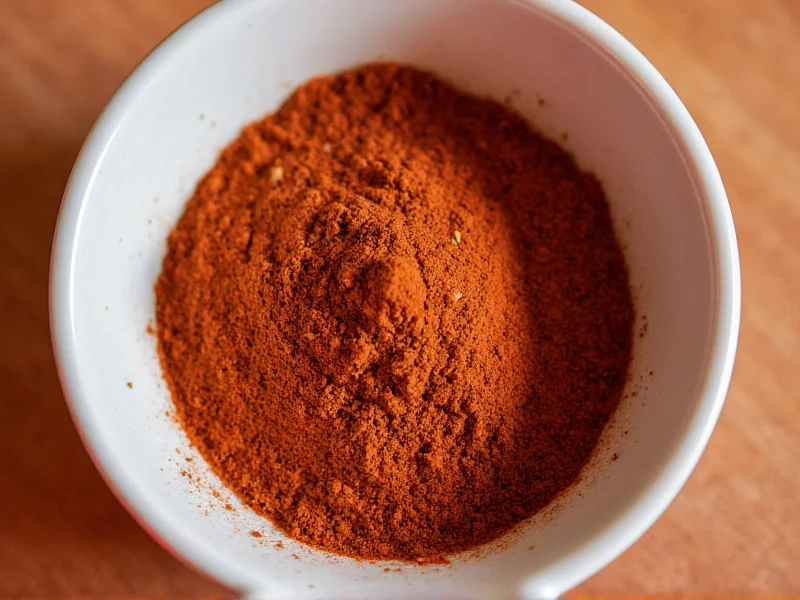Understanding Suya Spice: West Africa's Flavorful Secret
Suya spice represents one of Nigeria's most cherished culinary traditions, transforming ordinary meats into extraordinary street food experiences. This dry seasoning blend serves as the essential flavor foundation for suya, Nigeria's answer to shish kebabs that has gained international recognition among food enthusiasts seeking authentic African flavors.Core Ingredients of Authentic Suya Spice
Traditional suya spice contains several key components that work in harmony to create its signature taste:- Ground peanuts or peanut cake (kuli-kuli) - Provides the distinctive nutty base
- Cayenne pepper or African bird's eye chili - Delivers the characteristic heat
- Dried ginger - Adds warm, earthy notes
- Garlic and onion powder - Contributes savory depth
- Paprika - Offers color and mild sweetness
- Locust beans (iru/dawadawa) - Traditional umami enhancer
| Ingredient | Percentage in Traditional Blend | Flavor Contribution |
|---|---|---|
| Ground peanuts | 40-50% | Nutty, rich base |
| Cayenne pepper | 20-25% | Spicy heat |
| Dried ginger | 10-15% | Warm, earthy notes |
| Garlic/onion powder | 8-12% | Savory depth |
| Paprika | 5-8% | Color and mild sweetness |
Regional Variations Across West Africa
While Nigerian suya spice remains the most well-known version, regional adaptations exist throughout West Africa:- Northern Nigeria - Features stronger chili content and more locust beans
- Ghanaian version - Often includes additional cloves and nutmeg
- Malian adaptation - Typically milder with increased peanut content
- Coastal variations - May incorporate dried shrimp or fish for umami
Traditional Preparation Methods
Authentic suya spice preparation follows time-honored techniques that maximize flavor development:- Drying whole spices in the sun for several hours
- Roasting peanuts separately to enhance nuttiness
- Grinding ingredients using traditional stone mortars
- Mixing components while still slightly warm
- Allowing the blend to rest for 24-48 hours before use
How to Use Suya Spice in Modern Cooking
While traditionally used for skewered beef (tsire), suya spice has versatile applications in contemporary kitchens:- Meat seasoning - Rub generously on beef, chicken, or goat before grilling
- Marinade base - Mix with oil, onions, and tomatoes for 4-12 hour marination
- Vegetable enhancer - Sprinkle on roasted sweet potatoes or plantains
- Soup and stew flavoring - Add to Nigerian pepper soup or egusi
- Snack seasoning - Toss with roasted peanuts for spicy kuli-kuli
Where to Find Authentic Suya Spice
Locating genuine suya spice requires knowing where to look:- African specialty markets - Best source for traditional blends
- Nigerian grocery stores - Often carry multiple brand options
- Online retailers - Look for sellers specializing in African ingredients
- Homemade preparation - Most authentic option with fresh ingredients
Creating Your Own Suya Spice Blend
Making homemade suya spice allows customization to personal taste preferences. Here's a basic recipe for authentic suya spice ingredients:- Toast ½ cup raw peanuts in a dry skillet until golden
- Grind peanuts to a fine powder using a spice grinder
- Mix with 3 tbsp cayenne pepper, 2 tbsp dried ginger, 1 tbsp garlic powder
- Add 1 tbsp onion powder, 1 tsp paprika, and ½ tsp locust beans (optional)
- Store in an airtight container away from light and moisture
Cultural Significance of Suya Spice
Beyond its culinary applications, suya spice represents an important cultural element in West African communities. Street vendors known as "suya boys" have made this seasoned meat a social phenomenon across Nigeria, where sharing suya after work or during gatherings fosters community connections. The distinctive red-orange color and aromatic scent of cooking suya have become synonymous with Nigerian street food culture, making suya spice more than just a seasoning—it's a cultural icon.Frequently Asked Questions About Suya Spice
What's the difference between suya spice and Yaji?
Yaji is another name for suya spice, particularly used in Northern Nigeria. Both terms refer to the same traditional West African spice blend used for seasoning grilled meat. The name varies by region but the core ingredients and purpose remain identical.
Can I use suya spice as a dry rub for meats other than beef?
Absolutely. While traditionally used for beef (tsire), suya spice works wonderfully as a dry rub for chicken, goat, lamb, and even fish. For chicken suya, reduce the rub time to 1-2 hours as poultry absorbs flavors more quickly than beef.
Is suya spice gluten-free?
Traditional suya spice is naturally gluten-free as it contains only spices, peanuts, and aromatics. However, commercially prepared blends may contain additives or be processed in facilities with gluten. Always check labels if you have gluten sensitivity.
How long does homemade suya spice last?
Properly stored in an airtight container away from light and moisture, homemade suya spice maintains optimal flavor for 3-4 months. The peanut content means it won't last as long as single-spice blends, so for best results use within 2 months or freeze for extended storage.
What can I use if I don't have suya spice?
A suitable substitute combines equal parts smoked paprika, cayenne pepper, and ground peanuts with smaller amounts of ginger and garlic powder. While not identical, this blend captures suya's essential spicy, nutty profile for those seeking what to use instead of suya spice in recipes.











 浙公网安备
33010002000092号
浙公网安备
33010002000092号 浙B2-20120091-4
浙B2-20120091-4